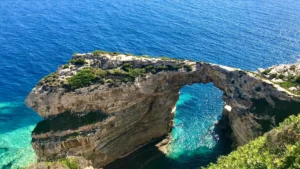
The mere mention of Mindoro conjures images of Puerto Galera and Apo Reef in most people’s minds. But, is there anything beyond these popular places that is worth discovering?
After spending three days in and around San Jose, the gateway to Occidental Mindoro, the answers came to me. Think of discovering unspoiled beaches, serene island retreats, beautiful nature walks, indigenous cultural encounters, sumptuous food, and even a wild encounter with a rare animal found only in Mindoro.
Named after Saint Joseph, its patron saint, San Jose is the most populous municipality in Mindoro. The inhabitants are a mix of Ilocanos, Batanguenos, Visayans and Mindanaoans. A portion of the population also includes the indigent Mangyans and foreign immigrants.
This got me real curious—why did these people who were once just visitors to San Jose decide to settle here for good? With that question hanging, I set off to explore Mindoro in the company of local tourism officer Mar Raro, along with the De Lemos family of Villa Paulina Beach Resort and Spa (mobile no. +63928 524 7394; villapaulina. multiply.com; rates starts at Php2,500/US$53). Here are what I’ve discovered:
You’ll get close to nature.
Nature lovers will enjoy the scenic pathways leading to the Cansubong Caves in Iling Island. With narrow cemented trails jutting out from the sides of the limestones battered by the waves, the path snakes through a forest leading to a higher ground. Up there, a panorama of the sea and a ruggedly beautiful shoreline unfolds. The trail continues downward leading to caves with huge chambers gleaming with stalactites and stalagmites. Hand-built by former San Jose Mayor, Atty. Ernesto Javarata, Cansubong Cave Resort (mobile no. +63928 455 8296) is a labor of love that he’s happy to share. Cottages and resort facilities picturesquely perched above the limestone cliffs are available for picnics or overnight stays.
You’ll enjoy soaking up the sun.
Visible even from the distant shores of San Jose, Manadi Island, commonly known as White Island, beckons like a siren to explore its waters teeming with life. The beach is very easy to explore as it stretches for only a mile.
You’ll indulge in peaceful retreats.
South of Ambulong, at the center of a cove hugged by dramatic limestone walls stands a small island. It has a beautiful coastline shaped by the elements on one side and fringed by floating bamboo cottages on the other side. This is Grace Island Resort (mobile no. +63928 346 8841 or +63918 600 8426).
With waters teeming with species, one can even meet the resident tortoise enclosed in its sanctuary. Guests can try the bamboo beds inside the floating cottages, then feel the waves rocking them to sleep. You’ll want to take a dip in its crystal clear waters. Boasting of fine and powdery white sands, clear turquoise waters, and splendid coconut trees, Inasakan Beach is a piece of paradise on Iling Island. Limestones shelter each side of the beach, while the seabed slopes gradually, making it a perfect swimming area for kids.
You’ll go off on exciting adventures.
Driving on rough and dusty roads, we headed to Barangay Monte Claro, northeast of San Jose City to get up close to the rare tamaraws. This endangered species of buffalos, scientifically known as Anoa mindorensi, can only be found in the Philippines and is endemic to Mindoro Island.
I joined our motley group in crossing a cable wire bridge which the locals use to cross to the other side when the water runs high. On the other side is the Tamaraw Gene Pool Farm center, home to the Tamaraw Conservation Program (mobile no. +63918 511 1323). Here, we met two captive tamaraws, the young and energetic Kali, and his pensive mother Mimi. Tamaraws are extremely territorial creatures. In fact, the two are contained in their own enclosures, large enough for them to roam around. Tamaraws are characterized by their unique V-shaped horns. I was expecting to see humongous creatures but found them quite small, about 60-70% the size of a full-grown carabao.
Sadly, their numbers have dwindled to an alarming 265 from over a thousand 10 years ago. TCP head coordinator Danilo Roca explained that the large decrease in numbers was caused by a spread of disease from imported cattle, deforestation, and poaching. The TCP and the local government are closely monitoring the tamaraws by doing regular counts and studying their breeding patterns in an effort to increase their numbers.
You’ll discover the rich Mangyan culture.
They are the original settlers of the island, and there are seven Mangyan tribes spread across Mindoro. The one in San Jose is the Buhid Mangyans who create colorful beadworks and intricate weaving. The Mangyans may no longer be sporting their traditional garbs, but most of them are still living the way they lived since the ancient times. A visit to the village is like going back in time as most of the houses are still made out of tree barks with cogon grass roofs.
You’ll marvel at historical ruins.
Entangled with the roots of an old tree, the ruins of Mangarin reminded me of a portion of the Ta Prohm Temple in Angkor, Cambodia. The remains of a watchtower, it has a significant role in the province’s past. Historical records show that during the 14th century, Chinese traders regularly drop anchor in Mangarin, making it the oldest settlement in Occidental Mindoro.
You’ll celebrate beautiful sunsets and perfect days.
After each day’s exploration, I’ve always found myself staring at the beautiful sunset from the dining area of Villa Paulina. The resort has all the perks to make anyone feel relaxed—the homey atmosphere, the exquisite food, and not to forget, the rejuvenating steam bath and Swedish massage to cap off a perfect day.
My stay in San Jose led me to discover the splendor of the province that I wasn’t expecting to find in this part of Mindoro. It leads me back to my question: so why did most visitors decide to settle here for good years ago? Was it the pristine beaches, the food, the backdrop of verdant forest or the friendly people? I have a hunch that maybe the answers are all of the above. One thing I’m certain about is that my brief stay in San Jose also made me feel like I’m at home.
This article was provided by Philippine Airlines’ Mabuhay Magazine. Mabuhay Magazine is published by Eastgate Publishing Corporation (email:info@eastgatepublishing.com;website: http://www.eastgatepublishing.com).







